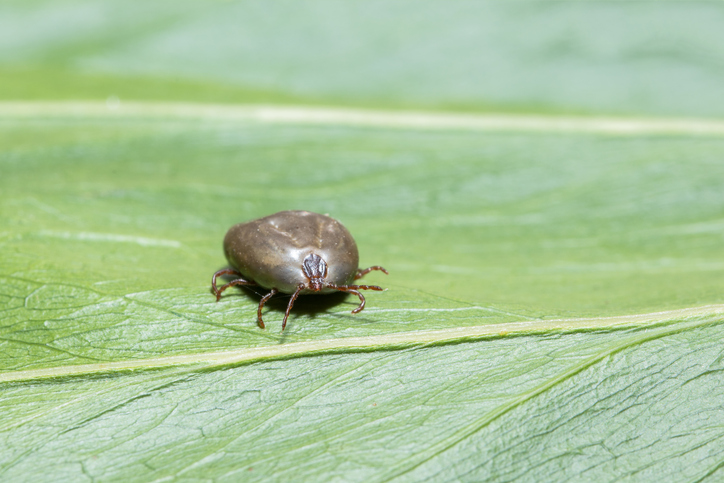Overview of Plague
- Plague
- Overview of Plague
Plague, caused by Yersinia pestis, is an acute and sometimes fatal bacterial zoonosis transmitted primarily by the fleas of rats and other rodents. Enzootic foci of sylvatic plague exist in the western USA and throughout the world, including Eurasia, Africa, and North and South America. In addition to rodents, other mammalian species that have been naturally infected with Y pestis include lagomorphs, felids, canids, mustelids, and some ungulates. Domestic cats and dogs have been known to develop plague from oral mucous membrane exposure to infected rodent tissues, typically when they are allowed to roam and hunt in enzootic areas. Birds and other nonmammalian vertebrates appear to be resistant to plague. On average, 10 human plague cases are reported each year in the USA; most are from New Mexico, California, Colorado, and Arizona. Most human cases result from the bite of an infected flea, although direct contact with infected wild rabbits, rodents, and occasionally other wildlife and exposure to infected domestic cats are also risk factors.
Etiology:
Y pestis is a gram-negative, nonmotile, coccobacillus belonging to the Enterobacteriaceae family. It exhibits a bipolar staining, “safety pin” appearance when stained with Wright, Giemsa, or Wayson stains. Y pestis grows slowly even at optimal temperatures (28°C [82.4°F]) and can require ≥48 hr to produce colonies. Several types of media can be used to grow Y pestis, including blood agar, nutrient broth, and unenriched agar. Colonies are small (1–2 mm), gray, nonmucoid, and have a characteristic “hammered copper” appearance. Different virulence factors are expressed by the organism at different temperatures and environments, allowing the organism to survive in flea vectors and then be transmitted to and multiply in mammalian hosts. The organism does not survive for long at high temperatures or in dry environments.
Epidemiology and Transmission:
Y pestis is maintained in the environment in a natural cycle between susceptible rodent species and their associated fleas. Commonly affected rodent species include ground squirrels (Spermophilus spp) and wood rats (Neotoma spp). Cats and dogs are usually exposed to Y pestis by mucous membrane contact with secretions or tissues of an infected rodent or rabbit or by the bite of an infected flea. People are usually exposed by an infected flea bite but are sometimes exposed due to contact with infected animals or via respiratory droplet transmission from pneumonic cases. Risk factors for cats acquiring plague include hunting and eating rodents and rabbits, visiting an enzootic plague area, finding dead rodents around the yard or areas that the animal frequents, and exposure to infected fleas. Plague epizootics cause nearly 100% mortality in affected wild rodent and rabbit populations. Once their host has died, Y pestis–infected rodent and rabbit fleas will seek other hosts, including cats and dogs, and potentially be transported into homes. Rodent and rabbit flea species are different from dog and cat fleas (Ctenocephalides spp), although most veterinarians and pet owners will not be able to visually distinguish flea species. Dog and cat fleas are rare in most plague-enzootic areas of the western USA; therefore, fleas on pets in these areas may be more likely to be fleas from wildlife, including rodents or rabbits.
Pathogenesis:
Fleas become infected with Y pestis when feeding on a bacteremic mammal. It has been thought that most flea transmission of plague occurs when the bacteria multiply and block the flea’s digestive tract, preventing it from digesting subsequent blood meals; the flea then regurgitates the plague bacteria and inoculates the host on which it is attempting to feed. Recent experiments have shown that some species of unblocked fleas are better transmitters of plague. These fleas became infectious within a day of feeding and remained infectious for ≥4 days, also inoculating the host on which they are feeding with plague bacteria that have been multiplying within the flea's upper GI tract. In mammalian hosts, plague presents clinically in one of three forms: bubonic, septicemic, or pneumonic. After inoculation into the skin by a flea bite or into mucous membranes by contact with infectious secretions or tissues, the bacteria travel via lymphatic vessels to regional lymph nodes. These infected lymph nodes are called buboes, the typical lesion of bubonic plague.
Secondary septicemic plague can develop when the organism spreads from the affected lymph nodes via the bloodstream but can also occur without prior lymphadenopathy (primary septicemic plague) and affect numerous organs, including the spleen, liver, heart, and lungs. Pneumonic plague can develop from inadequately treated septicemic plague (secondary pneumonic plague) or from infectious respiratory droplets (primary pneumonic plague), typically from a coughing pneumonic plague patient (animal or human).
Clinical Findings and Lesions:
The clinical presentation of plague in cats is most commonly bubonic plague. The incubation period ranges from 1–4 days. Cats with bubonic plague typically present with fever, anorexia, lethargy, and an enlarged lymph node that may be abscessed and draining. Oral and lingual ulcers, skin abscesses, ocular discharge, diarrhea, vomiting, and cellulitis have also been documented. A retrospective review of 119 naturally infected cats found that 53% of cats had bubonic plague; of those, 75% had submandibular lymphadenopathy, with bilateral enlargement in ~⅓ of cases. Affected lymph nodes show necrosuppurative inflammation, edema, and hemorrhages and contain numerous Y pestis organisms. In experimentally infected cats, fever was as high as 106°F (41°C), peaking ~3 days after exposure; mortality was as high as 60% in untreated cats. Ten of 16 (62.5%) cats exposed orally developed enlarged lymph nodes in the medial retropharyngeal, submandibular, sublingual, and tonsillar regions, palpable 4–6 days after exposure. Y pestis was isolated from the throats of 15 of these cats. In 6 subcutaneously exposed cats (mimicking a flea bite), none had palpably enlarged lymph nodes in the head or neck region, but four had subcutaneous abscesses at the inoculation site.
Cats with primary septicemic plague have no obvious lymphadenopathy but present with fever, lethargy, and anorexia. Septic signs may also include diarrhea, vomiting, tachycardia, weak pulse, prolonged capillary refill time, disseminated intravascular coagulopathy, and respiratory distress. Primary pneumonic plague has not been documented in cats. Cats with secondary pneumonic plague may present with all the signs of septicemic plague along with a cough and other abnormal lung sounds. Characteristic necropsy findings can include livers that are pale with light-colored necrotic nodules, enlarged spleens with necrotic nodules, and lungs with diffuse interstitial pneumonia, focal congestion, hemorrhages, and necrotic foci.
Dogs infected with plague are less likely to develop clinical illness than cats, although cases have been seen in enzootic areas. Symptomatic plague infection has been documented in three naturally infected dogs; clinical signs included fever, lethargy, submandibular lymphadenopathy, a purulent intermandibular lesion, oral cavity lesions, and cough.
Cattle, horses, sheep, and pigs are not known to develop symptomatic illness from plague, whereas clinical illness has been documented in goats, camels, mule deer, pronghorn antelope, nonhuman primates, and a llama. Infected mountain lions and bobcats have shown clinical signs and mortality similar to those of domestic cats.
Diagnosis:
Plague must be differentiated from other bacterial infections, including tularemia (see Tularemia), abscesses due to wounds (cat fight bites), and staphylococcal and streptococcal infections. During acute illness, preferred antemortem samples for culture include whole blood, lymph node aspirates, swabs from draining lesions, and oropharyngeal swabs from cats with oral lesions or pneumonia. Diagnostic samples should be taken before antibiotics are administered. Y pestis cultures can take 48 hr for visible growth to develop. An air-dried glass slide smear of a bubo aspirate can be used for a fluorescent antibody test that detects the F1 antigen on Y pestis cells. This test can be performed in a matter of hours in an experienced laboratory and is both sensitive and specific.
Postmortem specimens should include samples of liver, spleen, and lung (for pneumonic cases) and affected lymph nodes. In areas where tularemia is also present, samples should be collected under a biosafety hood, or the entire animal submitted to a veterinary diagnostic laboratory where aerosol precautions can be implemented. Serologic antibody tests can be confirmatory but require acute and convalescent samples taken 2–3 wk apart, demonstrating a 4-fold rise in antibody titer. Single acute sera are often negative if taken early in the course of illness or can be problematic in an enzootic area where animals may retain antibody titers from previous exposures.
Treatment:
Because of the rapid progression of this disease, treatment for suspected plague (and infection control practices) should be started before a definitive diagnosis is obtained. Streptomycin has been considered the drug of choice in human cases but is difficult to obtain and rarely used today. Gentamicin is currently used to treat most human plague cases and should be considered a suitable alternative choice in veterinary medicine for seriously ill animals, although it is not approved for this purpose. Animals with renal failure require adjusted dosages.
Doxycycline is appropriate for treatment of less complicated cases and to complete treatment of seriously ill animals after clinical improvement. Tetracycline and chloramphenicol are also options. Penicillins are not effective in treating plague. In treatment studies with experimentally infected mice, the fluoroquinolones performed as well as streptomycin. Fluoroquinolones have not been studied in any veterinary clinical trials, but there is growing evidence from their use in enzootic areas that they are effective in the treatment of plague in dogs and cats. The recommended duration of treatment is 10–21 days, with clinical improvement (including defervescence) expected within a few days of treatment initiation.
The duration of infectivity in treated cats is not definitively known, but cats are thought to be noninfectious after 72 hr of appropriate antibiotic therapy with indications of clinical improvement. During this infectious period, cats should remain hospitalized, especially if there are signs of pneumonia. Human cases have occurred in cat owners trying to give oral medications at home, exposing them to contact with the oral cavity and associated infectious secretions.
Prevention and Zoonotic Risk:
Along with treatment and diagnostic considerations, protection of people and other animals and initiation of public health interventions are critical when an animal is suspected to have plague. Animals with signs suggestive of plague should be placed in isolation, with infection control measures implemented for the protection of staff and other animal patients without waiting for a definitive diagnosis. The use of gloves, surgical masks, eye protection (if splashes or sprays are anticipated), patient isolation (animal or human), and standard hygiene and disinfection procedures for protection from potentially contaminated respiratory droplets, body fluids, and secretions from the patient (animal or human) are essential. Of the 23 human patients who developed cat-associated plague in the USA between 1977 and 1998, 6 were veterinary staff; the rest were cat owners or others handling a sick cat. After pneumonia has been excluded, or once there is evidence of clinical improvement after 72 hr of appropriate therapy, isolation procedures may be relaxed, but standard disinfection and hygiene procedures should continue.
Local or state public health officials should be notified promptly when plague is suspected to help conduct appropriate diagnostic tests, initiate an environmental investigation, and assess the need for fever watch or prophylactic antibiotics in potentially exposed people. To decrease the risk of pets and people being exposed to plague, pet owners in enzootic areas should keep their pets from roaming and hunting, limit their contact with rodent or rabbit carcasses, and use appropriate flea control. Epidemiologic data, fact sheets, public education brochures, and other information on plague is available on the Web sites of the CDC (http://cdc.gov/plague/) and the New Mexico Department of Health (http://nmhealth.org/ERD/Healthdata/plague.shtml).
- Plague
- Overview of Plague





